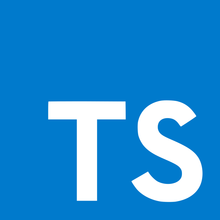TypeScript (TS) is a programming language. We use this programming language for large-scale JavaScript application development. We can refer to it as a typed superset of JavaScript.
🔗 https://www.typescriptlang.org/
TypeScript language needs a compiler that can convert TypeScript syntax into standard JavaScript, this compiler is called a transpiler. Transpiler is designed to convert one programming language into another one.
TypeScript files come with .ts extension. Once transpiler compiles the .ts files, you will get .js files as output.
- Interfaces can only describe object shapes.
- Interfaces can be extended by declaring it multiple times.
- In performance, Types can be faster.
type JSONResponse = {
version: number; // Field
payloadSize: number; // In bytes
outOfStock?: boolean; // Optional
update: (retryTimes: number) => void; // Arrow func field
update(retryTimes: number): void; // Function
(): JSONResponse; // Type is callable
[key: string]: number; // Accepts any index
new (s: string): JSONResponse; // Newable
readonly body: string; // Readonly property
};Used to describe the shape of objects, and can be extended by others.
interface JSONResponse extends Response, HTTPAble = {
version: number;
payloadSize: number; // In bytes
outOfStock?: boolean; // Optional
...
};
extends Response, HTTPAbleOptionally take properties from existing interfaces or types.
Declare a type which can change according to your interface
interface APICall<Response> = {
data: Response;
};